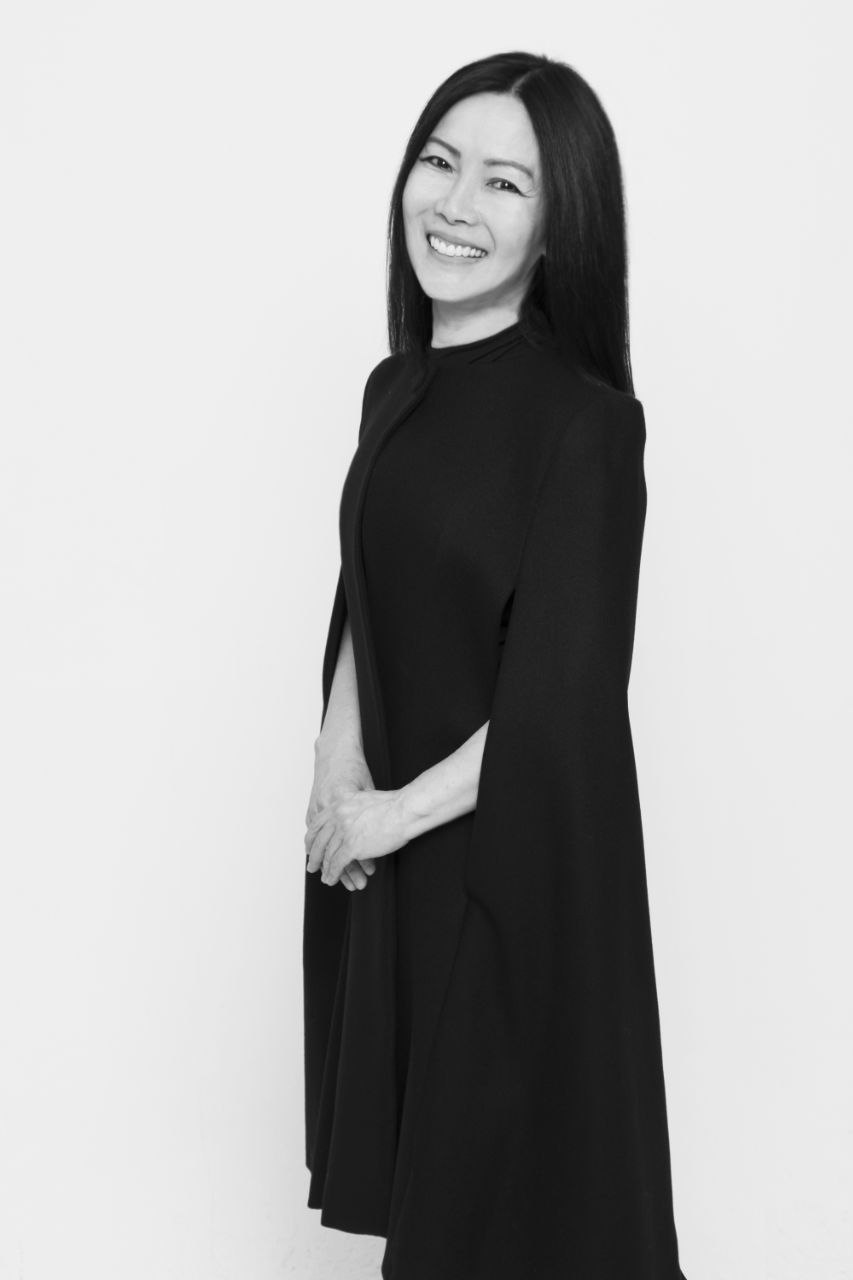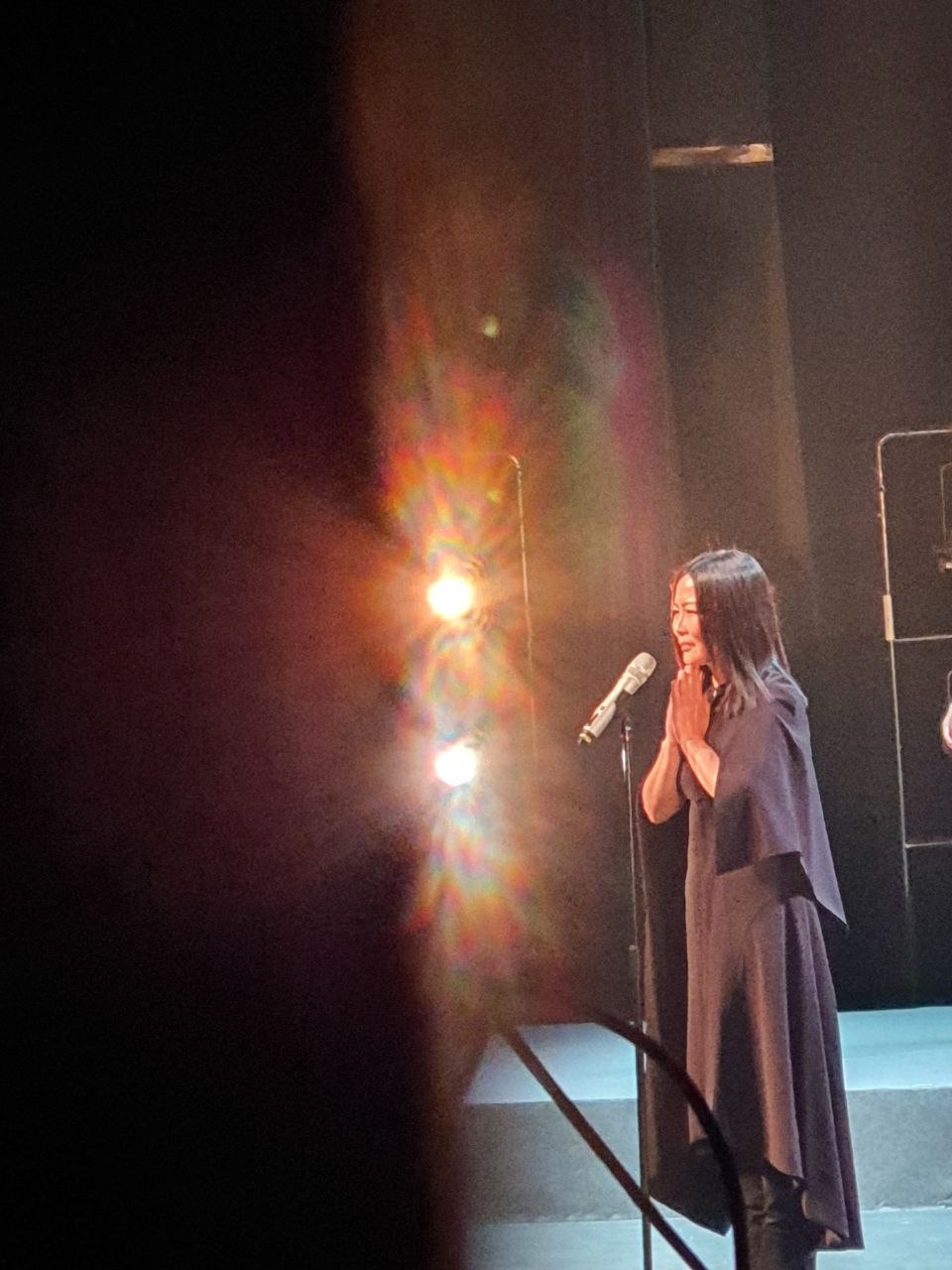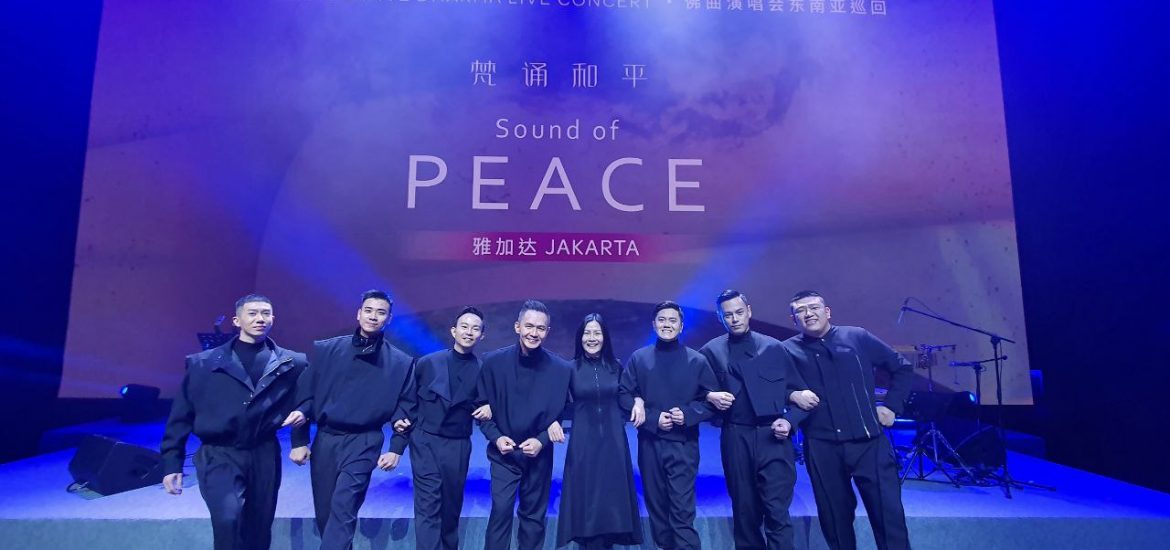Imee Ooi with JSJG
While Christian rock has long been a fixture of the American music scene, “Buddhist music” as a contemporary sub-genre is a much more fluid, undefined presence. The overall genre is emerging: Buddhist music is not necessarily quiet, as Taiwanese death metal band Dharma and Malaysia-based Plan B (an ensemble mixing pop, rock, and rap) prove. Vajrayana performers like Dechen Shak-Dagsay, a Tibetan singer based in Switzerland, or Nepalese singer Ani Choying Drolma, are among the most prominent interpreters of traditional mantras that use modern cadences and instruments, blending them with the sacred words and older tools like prayer bowls and bells.
In Southeast Asia and East Asia, there really is only one woman almost single-handedly defining music based on the traditional discourse of Theravada, Mahayana, and Vajrayana and scriptures and mantras. Also from Malaysia, Imee Ooi has independently produced dozens of albums and EPs over decades. On 23 July, she and artist ensemble JSJG gave a grand performance in Jakarta’s JIEXPO Theatre, collaborating with Kanho Yakushiji, a Japanese Buddhist priest who also believes in the impact of contemporary music to enlighten and inspire. This was part of a seven-show tour in three cities, the others being Kuala Lumpur and Singapore.
“There is a popular saying: We make our own karma,” she says. I had met with Ooi in Kuala Lumpur during an August sojourn in Malaysia. “I think there will be no set template for this genre of Buddhist music that I produce. Maybe there will never be a genre, either. If you say I have led the development of contemporary Buddhist music in Asia for years, maybe I merely created songs where listeners felt they could relate directly to. In their purest form, these sound waves could be said to have the flavor of Buddhism, with the Dharma having been presenting authentically. People trust my interpretation of these sacred words.”

Ultimately, she believes: “Genres are decided by individuals and culture. Music that can serve as a vehicle for the Dharma’s wisdom, compassion, consolation, peace, harmony, healing, meditative, joy, and inspiration – you get the idea – will be the template for whatever is determined to be Buddhist music.”
Ooi unveiled a long-term ideal that could well manifest as an even more ambitious event: a “loving-kindness Olympics” concert, or Metta Olympics, that will bring together Buddhist musical representatives from different countries. “I an active sportsperson during my youth and have always followed the Olympics closely. I especially admired how Olympics unite people under the spirit of sportsmanship. At least for that period of time, people seem to put away differences and focus on pushing their limits.” She elaborated further: “Besides the good-natured competitions, human bonding and the sharing of cultures are a common story at every Olympics event. Likewise, if we can put forward an Olympic-themed concert with musicians from different countries presenting their interpretation and creation of Buddhist music, I feel this could be a most joyful and effective way to spread metta and the Dharma.”
Ooi has spent her professional life exploring and reflecting on what constitutes Buddhist music, and the visual aspect is an important complement to the aural experience. She places emphasis on gestures and posture, much like hand mudras and meditation positions in Buddhism. “For me, music is for the ears to perceive and digest. When it is presented together with visual content like in a concert or music video – and let’s be honest, that is what the pop music industry is all about – I feel the ‘body,’ the visible forms, will dominate the listeners’ consciousness, or at least guide their first impressions of the music. Mindfulness of this aspect is important. We must be tranquil but also self-assured and confident,” she said.

“In the behind-the-scenes music productions, the body movement of the creator, be it writing, singing, or playing an instrument, body movements represent or interpret the thoughts or emotions. Hence these expressions form the DNA of the music. I feel that our streaming industry, which is heavily reliant on visual content, should cultivate and achieve a balance between both, instead of effectively using the visual side as bait. We see this all the time: idealizing materialistic priorities like ostentatious displays of wealth, appeals to sensual desire like the constant sexualization of women’s (and men’s) bodies, and so on. Sadly, the usual practice only creates more delusion and enervates the soul, rather than energizing and inspiring it.”
Ooi stressed to me that she prefers “aspiration” rather than the grand word of “vision.” I can empathize with her reticence to use the latter. She feels that vision simply means something she can see in her mind’s eye now, but has yet to achieve. “Aspiration to me is something I don’t see now but wish to reach there one day.” Regardless of how her wishes are framed, it is important that the heart of Bodhi informs said desires. “Like the cultivations in the Six Paramitas, my goals and hopes must take on the process of Giving, Steadfastness, Patience, Diligence, Concentration and Wisdom to reach.”


